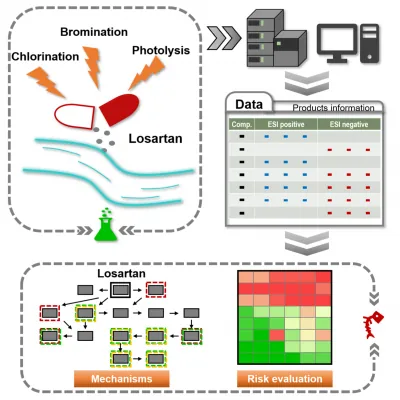
Time for Action: Tackling Cardiovascular Disease Inequalities in Europe
2025-09-01
Author: Arjun
A Call to Address Europe's Heart Health Crisis
Professor Susanna Price, Chair of the European Society of Cardiology’s Advocacy Committee, emphasizes the urgent need for action in the fight against cardiovascular disease (CVD), which remains the world’s leading cause of death.
In 2019 alone, approximately 17.9 million people succumbed to CVD, accounting for 32% of global fatalities. Within Europe, these diseases claim 34% of all lives, with women disproportionately affected. Despite advancements, deep-rooted inequalities in prevention, diagnosis, and treatment persist, demanding immediate attention to safeguard public health and foster equitable outcomes.
The Disparities in Cardiovascular Health
Currently, 62 million individuals across the EU are living with CVD, with about 20% of premature deaths under the age of 65 linked to these conditions. Gender disparities are stark—women face higher mortality rates post-cardiovascular events, and CVD accounts for 37% of female deaths compared to 31% in men. Unfortunately, societal perceptions often mislabel CVD as primarily a ‘men’s disease.’
The inequalities extend beyond gender, encompassing geographical and socio-economic challenges. For instance, heart disease death rates can vary dramatically, with women in Lithuania being 13 times more likely to die than their counterparts in France. Those in rural areas and low-income groups are often at a greater risk due to limited access to preventive services and poorer health outcomes.
The Power of Early Detection
Identifying cardiovascular risk factors early is a critical strategy for preventing disease and lowering mortality rates. Risk prediction models can facilitate timely screenings; however, they must integrate social and gender-specific health determinants to be truly effective. There’s an urgent need to focus on identifying at-risk women, especially those with pregnancy-related cardiac complications.
Innovating Through Technology
Digital tools hold transformative potential in CVD care, yet it’s vital to harmonize data collection and mitigate gender bias in AI technologies. Properly implemented, these innovations can pave the way for earlier diagnoses and personalized healthcare. However, accessibility must be paramount, ensuring that every community, regardless of socio-economic status or geography, benefits from these advancements.
Raising Awareness and Improving Outcomes
Public awareness is crucial, as many women remain unaware of the specific symptoms tied to their risk. This lack of knowledge often leads to delays in diagnosis and treatment. Comprehensive public health campaigns are essential to educate the public about female-specific symptoms and encourage routine cardiovascular check-ups.
A Comprehensive Approach to Prevention
Addressing CVD requires a life-course approach, from childhood through old age, targeting both modifiable factors like smoking and diet and non-modifiable risks such as genetics. This multifaceted strategy aims to combat the complex nature of cardiovascular issues.
The European Call to Action
On April 23, 2025, the European Alliance for Cardiovascular Health (EACH) presented a roadmap at the European Parliament aimed at enhancing CVD prevention across Europe. This collaborative effort seeks to unify 21 organizations to prioritize cardiovascular health at an EU level.
Key proposals include establishing a European Cardiovascular Health Knowledge Centre to tackle data issues, creating an Observatory to share best practices, and implementing a continuous European Cardiovascular Health Check to facilitate early detection over a person's lifetime. Additionally, tailored National Cardiovascular Health Action Plans and integrated digital innovation incubators are crucial for effective prevention.
A Historic Opportunity for Europe
These initiatives have the potential to revolutionize Europe’s approach to cardiovascular health, especially with impending plans revealed by Commissioner Várhelyi. The success of these strategies hinges on decisive political action and sustained funding. By developing a comprehensive, inclusive, and data-driven strategy for CVD prevention, Europe can address its most formidable health challenge while ensuring no individual—regardless of gender, geography, or socio-economic status—is left behind.



 Brasil (PT)
Brasil (PT)
 Canada (EN)
Canada (EN)
 Chile (ES)
Chile (ES)
 Česko (CS)
Česko (CS)
 대한민국 (KO)
대한민국 (KO)
 España (ES)
España (ES)
 France (FR)
France (FR)
 Hong Kong (EN)
Hong Kong (EN)
 Italia (IT)
Italia (IT)
 日本 (JA)
日本 (JA)
 Magyarország (HU)
Magyarország (HU)
 Norge (NO)
Norge (NO)
 Polska (PL)
Polska (PL)
 Schweiz (DE)
Schweiz (DE)
 Singapore (EN)
Singapore (EN)
 Sverige (SV)
Sverige (SV)
 Suomi (FI)
Suomi (FI)
 Türkiye (TR)
Türkiye (TR)
 الإمارات العربية المتحدة (AR)
الإمارات العربية المتحدة (AR)